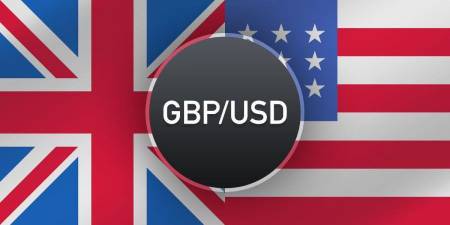
The Pound Sterling (GBP) weakened significantly against the US Dollar early Wednesday as persistently elevated US Consumer Price Index (CPI) data dampened market sentiment. Economists had anticipated high inflation for March due to factors like rising energy costs and insurance premiums, and the data fuels speculation that the Federal Reserve (Fed) may push rate cuts back to Q3.
Domestic Outlook: UK GDP, Manufacturing Data in Focus
The Pound will be influenced by Friday’s release of UK Gross Domestic Product (GDP) and manufacturing data for February. GDP data will provide an overall economic snapshot, while manufacturing figures will offer insights into sector health and overall demand strength. Weak data could bolster expectations for earlier Bank of England (BoE) rate cuts, while strong numbers suggest potential for economic recovery.
Market Movers: GBP Declines, USD Rallies
The Pound Sterling (GBP/USD) experienced sharp selling pressure near the 1.2700 resistance level. Surprisingly strong US CPI data for March has driven a shift towards risk-off sentiment, with the S&P 500 declining nearly 1%.
Headline inflation rose a robust 3.5% annually, surpassing the consensus of 3.4% and the prior 3.2% reading. Core CPI (excluding volatile food and energy) also increased steadily at 3.8%. The data exceeded monthly forecasts of 0.3% growth for both headline and core CPI.
Impact on Fed Outlook
The March CPI data suggests prolonged inflationary pressure, potentially delaying Fed interest rate cuts. To achieve the Fed’s 2% inflation target, a monthly CPI increase of around 0.17% would be needed for the rest of the year. The US Dollar Index (DXY) climbed to 105.00.
UK Household Strain, BoE Rate Cut Expectations
In the UK, the rising cost of living puts pressure on households and increases demand for BoE rate cuts. A recent Financial Conduct Authority (FCA) survey highlighted the struggles faced by individuals in paying bills and meeting credit obligations. The FCA estimated that 7.4 million people experienced financial difficulties in January 2024, down from January 2023 but still significantly higher than the 5.8 million in February 2020. Market sentiment favors a post-June BoE pivot towards rate cuts, a view reinforced by Governor Andrew Bailey’s statement that expectations for two or three cuts this year are “reasonable.”
Technical Outlook: GBP/USD Declines, Tests Support
GBP/USD experienced a sharp decline after hitting resistance near 1.2700, breaking out of Tuesday’s trading range and indicating a potential downtrend. The pair tested the 200-day Exponential Moving Average (EMA) near 1.2570. Key support lies at the psychological 1.2500 level. The 14-period Relative Strength Index (RSI) remains within the 40.00-60.00 range, reflecting market indecision.
